Discover 15 hidden attractions, cool sights, and unusual things to do in Inverness (United Kingdom). Don't miss out on these must-see attractions: Inverness Castle, St Mary's Catholic Church, and Greig Street Bridge. Also, be sure to include Inverness Museum and Art Gallery in your itinerary.
Below, you can find the list of the most amazing places you should visit in Inverness (Scotland).
Table of Contents
Inverness Castle
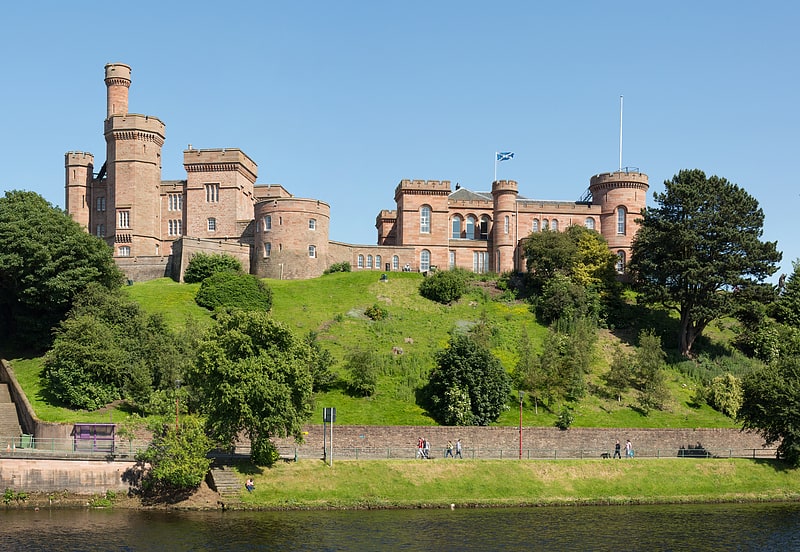
Castle in Inverness, Scotland. Inverness Castle sits on a cliff overlooking the River Ness in Inverness, Scotland. The red sandstone structure, displaying an early castellated style, is the work of a few 19th-century architects. William Burn designed the Sheriff Court, Joseph Mitchell the bastioned enclosing walls, and Thomas Brown II the District Court, originally built as a prison. It is built on the site of an 11th-century defensive structure. Until 30 March 2020, it housed Inverness Sheriff Court: this has now been moved to the Inverness Justice Centre.
There has been a castle on this site for many centuries. In April 2017 the north tower of the castle was opened to the public as a view point. At present, only the castle grounds and the north tower are open to the public. The remainder of the castle is not open to the public.[1]
Address: 41 Castle St., IV2 3DU Inverness
St Mary's Catholic Church
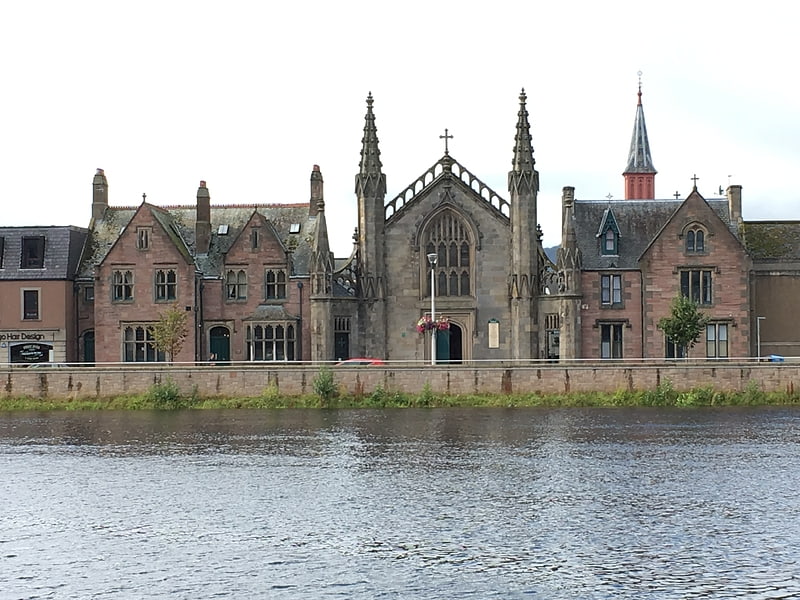
St. Mary's, Inverness is a Roman Catholic church in the city of Inverness, Inverness-shire, in Scotland and is a part of the RC Diocese of Aberdeen. The building is significant for the high quality of its altar and stained glass windows. There is daily mass in the church and it also the home of the Polish Chaplaincy for Inverness.[2]
Address: 30 Huntly Street, IV3 5PR Inverness
Greig Street Bridge
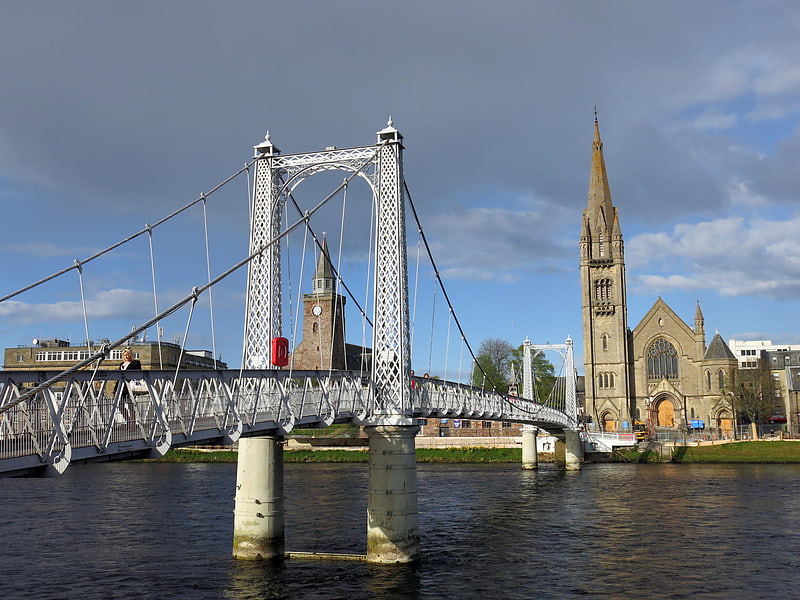
Footbridge in Inverness, United Kingdom. Greig Street Bridge is a footbridge across the River Ness located in Inverness, Scotland. It is a suspension bridge built in 1880–1 by the civil engineer C. Manners in conjunction with the Rose Street Foundry for a cost of £1,400.
It is composed of two side spans of 20.4 metres (67 ft) and a central span of 61.3 metres (201 ft). The bridge has warren trusses with an additional railing for pedestrian safety. The cables were replaced in 1952, as were the anchorages in 1989.
An important rite of passage for young Invernesians involves getting a third of the way onto the bridge and jumping up and down in unison. This creates the famous Greig Street sine wave, to the delight of the perpetrators and the horror of tourists, giving it, and an identical bridge further upstream, the local nickname of "The Bouncy Bridge".[3]
Address: Church Lane, IV 3 5 Inverness
Inverness Museum and Art Gallery
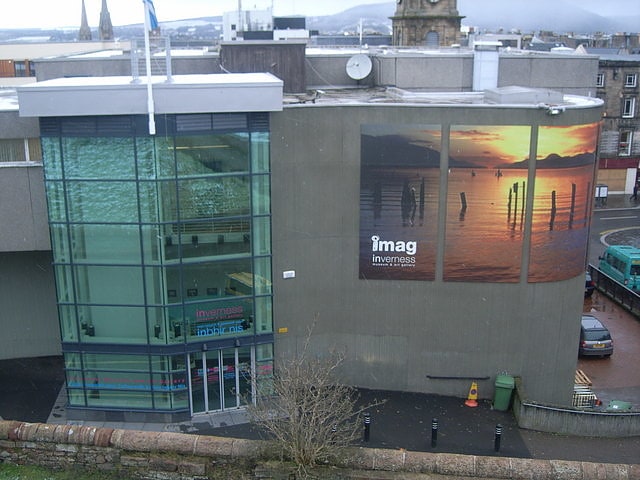
Museum in Inverness, Scotland. Inverness Museum and Art Gallery is a museum and gallery on Castle Wynd in Inverness in the Highlands of Scotland. Admission is free. The collection and facilities are managed by High Life Highland on behalf of Highland Council.
The original Inverness Museum opened in 1881 and began to develop as a Highland and Jacobite collection. One of the important early additions was a group of historic Stuart portraits donated by the family of Prince Frederick Duleep Singh, including a portrait of Prince Charles Edward Stuart attributed to Pompeo Batoni and a Cromwell that Prince Freddy hung upside down. Subsequent additions to the collection include examples of Highland landscapes by Scottish artists including Alexander Nasmyth, John Quinton Pringle and Tom Scott.
The Castle Wynd/Bridge Street area of Inverness was cleared for re-development in 1963 and the current complex was built. Since 1963 there have been a two major redevelopments to improve the museum: the first in 1982 to incorporate a café, new permanent galleries and temporary exhibition/art galleries, and again in 2006 it was closed for six months to allow a £1.3m makeover, with the re-design completed in time for Highland 2007.
The Museum presents history and heritage in the Capital of the Highlands. On the ground floor you will find Scottish geology and natural history as well as the archaeology of the Highlands including Pictish stones. The displays continue on the first floor with the more recent history of the Highlands – Jacobite memorabilia, Inverness silver, Highland weapons and bagpipes. The first floor features a programme of temporary exhibitions.
In 1980 a puma was captured in Inverness-shire; it is believed that it was an abandoned pet. The puma was subsequently put into a wildlife park. When it died it was stuffed and placed in the Museum.[4]
Address: Castle Wynd, IV2 3EB Inverness
Caledonian Stadium
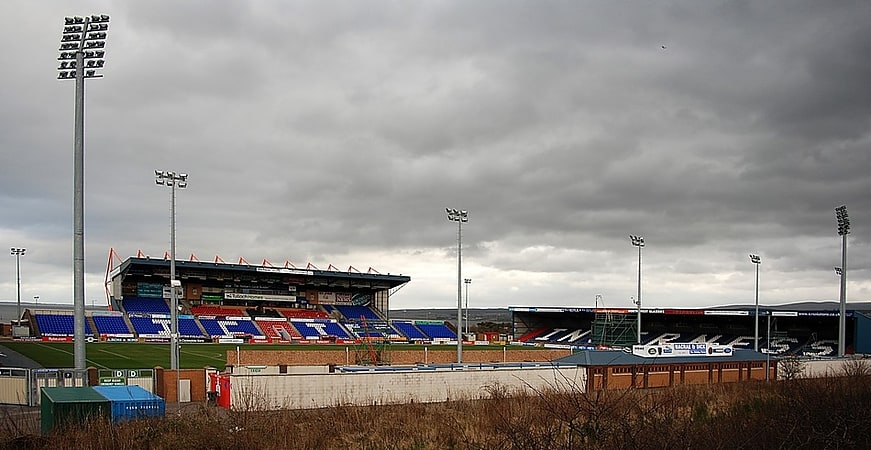
Stadium in Scotland. The Caledonian Stadium, is an association football stadium situated in the Longman area of Inverness, Scotland, near the banks of the Moray Firth. The stadium plays host to the home matches of Scottish Professional Football League club Inverness Caledonian Thistle.[5]
Address: Stadium Rd, IV1 1FF Inverness-shire
Inverness Cathedral
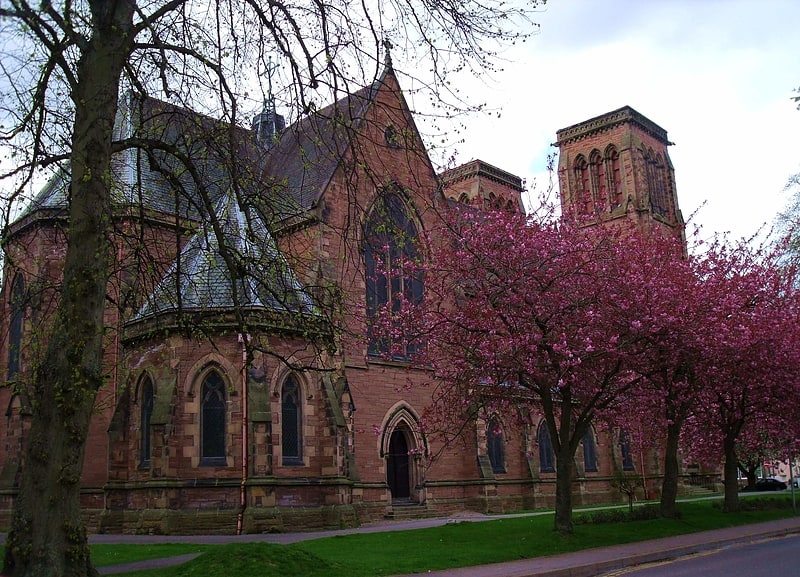
Cathedral in Inverness, Scotland. Inverness Cathedral, also known as the Cathedral Church of Saint Andrew, is a cathedral of the Scottish Episcopal Church situated in the city of Inverness in Scotland close to the banks of the River Ness. It is the seat of the Bishop of Moray, Ross and Caithness, ordinary of the Diocese of Moray, Ross and Caithness. The cathedral is the northernmost extant diocesan cathedral in mainland Britain - Dornoch Cathedral, Fortrose Cathedral and Elgin Cathedral are no longer acting as diocesan cathedrals. It was the first new Protestant cathedral to be completed in Great Britain since the Reformation.[6]
Address: 15 Ardross Street, IV3 5NS Inverness
Ship Space
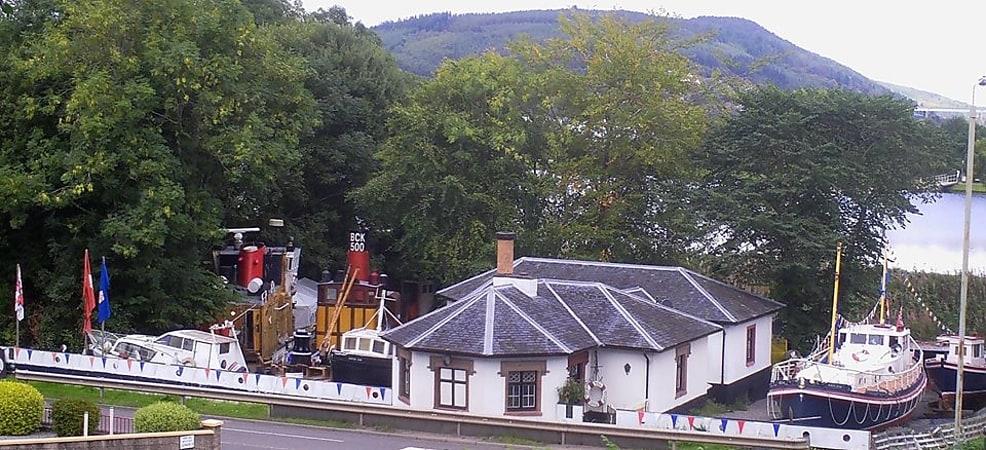
Museum. ShipSpace was an interactive maritime museum in Inverness, Scotland. The museum was situated along the historic Caledonian Canal at the Muirtown Basin. The 1:10 scale Titanic model was one of the main attractions.
Inside the museum building there were various interactive exhibits, photos, posters and information about the ship available as well as a rolling film that showed divers going down to the sunken ship.
Outside, the 1:10 scale Titanic model was the centrepiece of the museum. The scale model contained three main rooms: a Parisian-styled café, a replica bridge, and a Marconi radio communications room.
Other exhibits outside included:
A replica of the Nautile submarine, one of the mini submersibles that dove 3 miles down to the Titanic
The Guiding Star, a West Coast creel fishing boat which was the last built at Inverness Thornbush slipway.
A full-scale replica of the Star Of Hope, the first Herring Drifter from Buckie.
A 45 ft RNLI Watson Class life boat.
The museum was located in the east building, which had been constructed in the mode of the original west building, a toll house. The two buildings were separated by a corridor.
Ship Space is now permanently closed since April 2018 following the untimely death of the owner/curator, Stan Fraser.[7]
Address: 16 Clachnaharry Rd, IV3 8QH Inverness
Old High Church
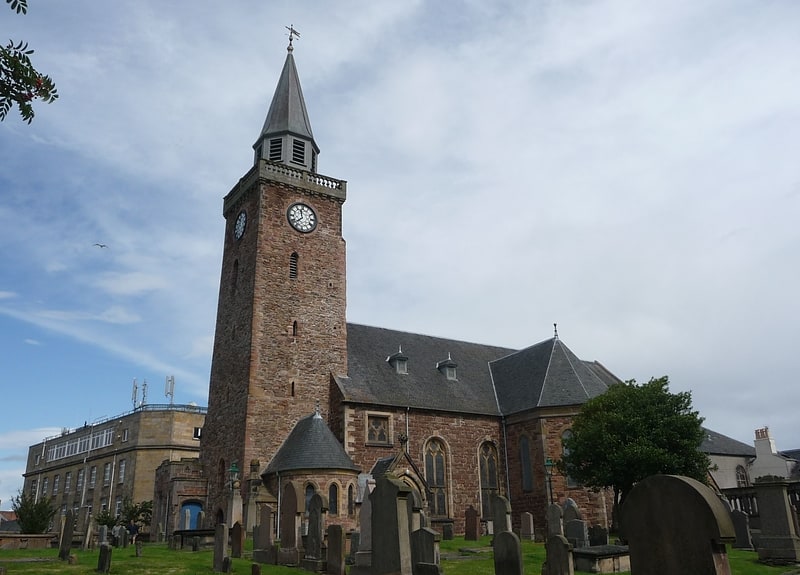
Parish church. Old High St Stephen's Church is a parish church of the Church of Scotland in Inverness, the capital city of the Highlands of Scotland. The congregation was formed on 30 October 2003 by a union of the congregations of Inverness Old High and Inverness St Stephen's . Unusually in a union of Church of Scotland congregations, both buildings were retained for worship. Sunday services are held almost every Sunday in both buildings, but both places of worship are under the jurisdiction of the one Kirk Session.
The Old High congregation was the oldest congregation in Inverness. The church—the historic town church of Inverness—mainly dates from the eighteenth century. Its site, overlooking the banks of the River Ness, has been used for worship since Celtic times. Thus the congregation can claim to have been founded by St Columba, the Irish monk who first brought Christianity to Inverness. Among many notable features is a Father Willis organ, restored in 2010. The Old High Church is a category A listed building.
St Stephen's was founded as a 'daughter church' of the Old High in 1897. It is a gothic building in Morayshire freestone, designed by WL Carruthers. St Stephen's is a category B listed building.
The parish area includes the city centre, part of the Crown area, and the southern suburbs of the city, including Drummond and Lochardil.
The first minister of the united charge is the Reverend Peter W Nimmo, who was inducted in August 2004. He had previously been minister of High Carntyne in Glasgow.[8]
Address: Church Street, IV1 1EY Inverness
Kessock Bridge
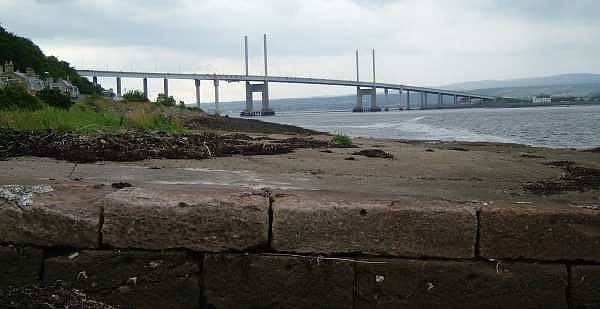
Cable-stayed bridge in the United Kingdom. The Kessock Bridge carries the A9 trunk road across the Beauly Firth at Inverness, Scotland.[9]
Moniack Castle
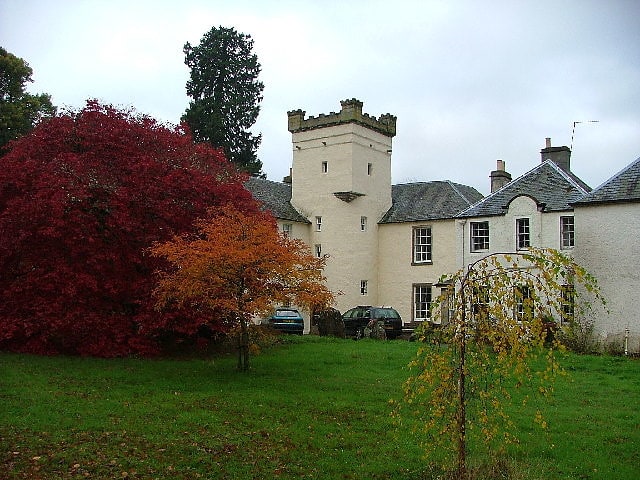
Moniack Castle is a 16th-century tower house located 7 miles west of Inverness, and just south of Beauly in Highland, Scotland. The castle was built in 1580 by members of the Clan Fraser. The castle is protected as a category B listed building.[10]
Eden Court Theatre
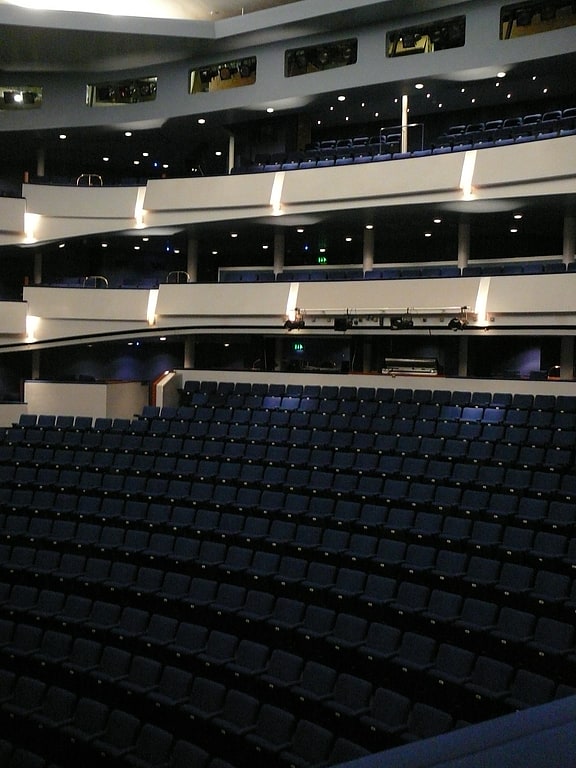
Theatre in Inverness, Scotland. Eden Court Theatre is a large theatre, cinema and arts venue situated in Inverness, Scotland close to the banks of the River Ness. The theatre has recently undergone a complete refurbishment and major extension, adding a second theatre, two dedicated cinema screens, two performance/dance studios, improved dressing room and green room facilities and additional office space. The theatre's restaurant and bar facilities have also been totally overhauled and improved.[11]
Address: Inverness, Bishops Road
East Church
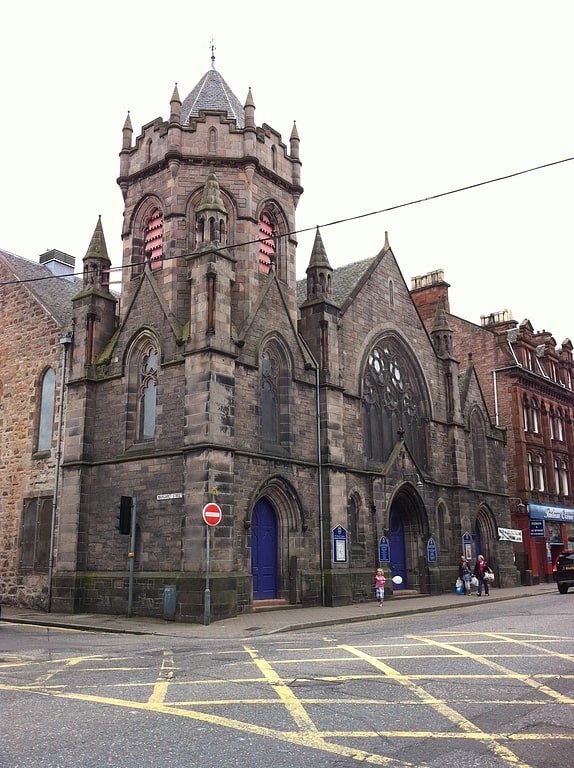
Presbyterian church in Inverness, Scotland. East Church, Inverness is a Category B listed parish church in the Church of Scotland in Inverness.[12]
Crown Church
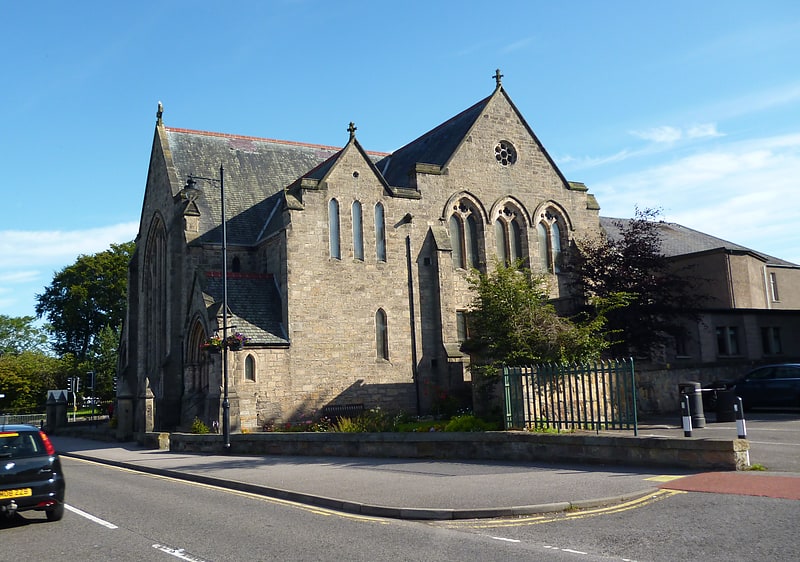
Parish church in Inverness, Scotland. Crown Church is a parish church in Inverness in the Scottish Highlands, located at the junction of Midmills Road and Kingsmills Road near the city centre. The first minister was the Reverend William Todd, renowned for his fervent evangelical preaching. Originally built for the Free Church of Scotland, the church buildings were completed in 1901. By this time the congregation had become part of the United Free Church of Scotland, which in turn united with the Church of Scotland in 1929, thus reuniting Scotland's largest Presbyterian denominations.
In 2004 the congregation had 820 members, making Crown Church the largest Church of Scotland congregation in Inverness in terms of membership. The current minister (since 1998) is the Reverend Dr Peter H. Donald, who is also Vice-Convener of the Church of Scotland's Mission and Discipleship Council.[13]
Address: Kingsmills Rd, IV2 3JT Inverness
Barn Church
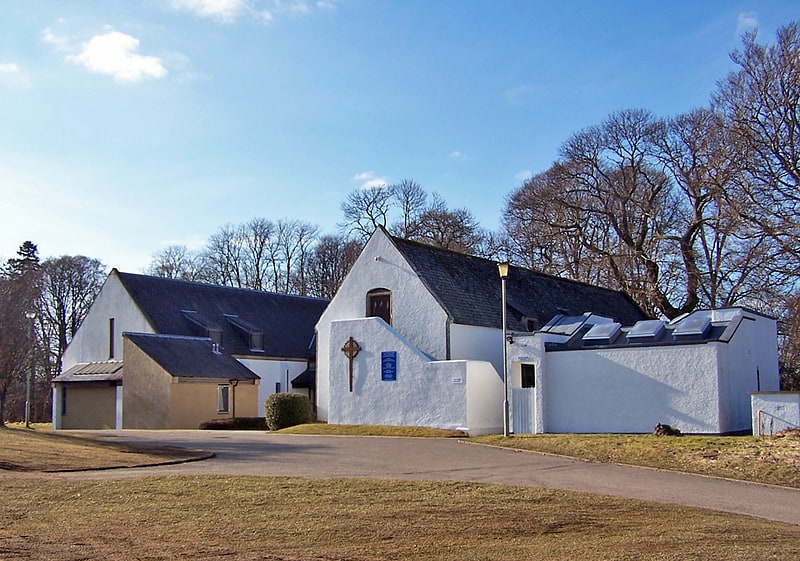
Parish church in Culloden, Scotland. The Barn Church is a parish church of the Church of Scotland at Culloden, in the Presbytery of Inverness. Although the congregation is relatively young, and only received full status as a parish church in its own right in the late 1980s, the building is of considerable historical interest. It was originally built as a tithe barn for the estate of Culloden House, and in 1746 it was used by the Jacobite army as accommodation on the night before the Battle of Culloden. During the 19th century it was used as a blacksmith's workshop, before being taken over by the East Church of Inverness as a mission station in the early 20th century. When it was granted the status of a church extension charge in the 1970s, the congregation erected a new church called "the New Barn" which is joined to the old building; the historic building today serves as the church hall. Interesting architectural features of the Old Barn include the slit windows for defensive purposes and the parallel doors which can create a wind tunnel required for winnowing.
The Church serves the Culloden, Balloch, Smithton, Westhill and Cradlehall areas on the outskirts of Inverness.
On Friday, 14 November 2014, the new minister, the Rev. Mike Robertson, was ordained and inducted. The previous minister, the Rev. Jim Robertson, had served for about 20 years.[14]
Loch Ruthven
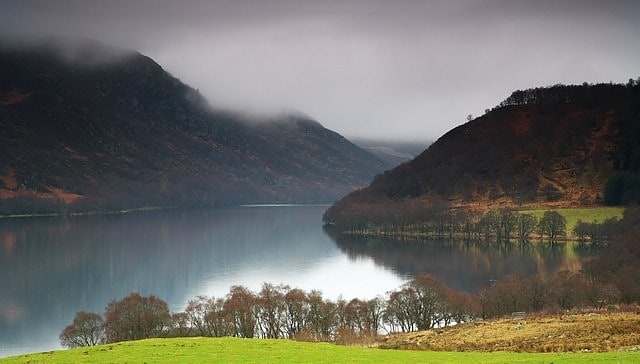
Loch in Scotland. Loch Ruthven is a large loch which lies to the southeast of Loch Ness in the Highland region of Scotland. It is 2.25 miles long, extends over an area of 368 acres and is up to 42 feet deep. The most important breeding site in the UK for Slavonian grebes, it has one of the highest populations of this species in Europe. These rare birds can also be found in several other local lochs. The RSPB has established a reserve at Loch Ruthven.
Loch Ruthven was designated a Ramsar site on 31 August 1992.[15]